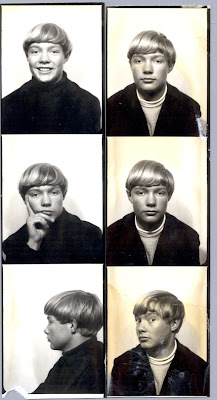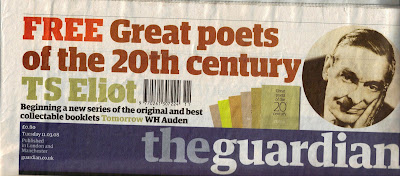
I've just come back from watching Todd Haynes' Dylan biopic at the Gulbenkian Theatre on campus at the University of Kent. The movie was preceded by eight ads. Five of them were for cars, one was for men's deodorant, one (a public service job) was for condoms, and one for the British Marines. I guess they were aimed at a student audience but the last was especially amusing seeing as how the average age of the audience would have been around fifty (and I'm being generous).
The movie was great, I thought, and, to my delight, completely unlinear. I'm someone who has trouble following regular plotlines where you have to remember details of character and even (in extreme cases) what individuals actually look like. Cate Blanchett has been, rightly, praised for her role in 'I'm Not There' (has there ever been a movie that she's acted badly in? She's good even in the otherwise excruciating second 'Elizabeth' job), but I felt that all the Dylans were good. Some reviewers have had problems with certain things, notably the scenes featuring Richard Gere and the Basement Tape characters, but I felt it all held together pretty well. The film didn't dodge Dylan's gender politics either (the 'early seventies' Dylan doesn't think women can write poetry, even if they 'rule the world' - maybe he'd read too much Robert Graves . . .). Where another film might have failed dismally this one grasps the whole mythic thing with an agility matched only by Greil Marcus' criticism.
It occurred to me that my own desires to change tack, to shift from one kind of poetry to another, has its roots in those especially sixties moments when you expected each album by major groups like the Beatles to be different. I've often spoken of the love that John Forbes and myself had for popular music but I'd never seen this direct influence on my own work as clearly as I now do after watching 'I'm Not There'. With Dylan I was a relatively late starter. True perhaps to my immediate demographic I didn't latch on to the 'folk' Dylan. My English teacher in year five - the first person I showed my work to - was probably more interested in Dylan Thomas than in Bob, though he was a 'folkie' and he would certainly have identified with the famous 'Judas' caller. But I came to Dylan through the Byrds and couldn't have been more delighted than when he left Pete Seeger and Joan Baez (phoney Joney as a friend once said) well behind. The booth photos at the top of this entry, by the way, are of me in 1967, the year of Dylan's basement sabbatical.














































